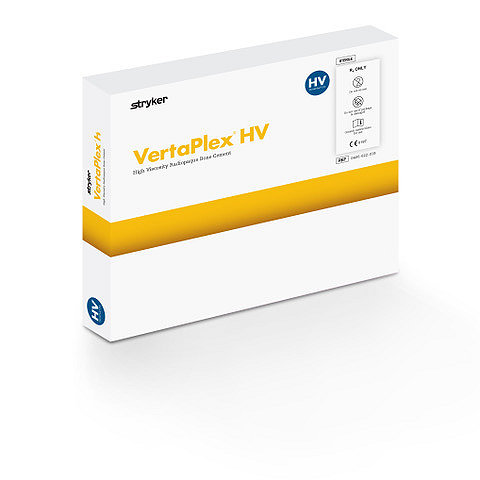VertaPlex HV bone cement
VertaPlex HV bone cement is a high viscosity bone cement that contributes to a controlled interdigitation and fill.

VertaPlex HV Cement reaches a thick viscosity as soon as it's mixed and maintains viscosity for an average of 18 minutes1, giving physicians more working time.
We set the bar in 2009 with the release of VertaPlex HV bone cement, addressing specific viscosity and working time preferences for treating vertebral compression fractures. In 2015, VertaPlex HV bone cement became the first PMMA in the U.S. to receive 510(k) clearance for the fixation of pathological fractures of the sacral vertebral body or ala using sacral vertebroplasty or sacroplasty.
- Immediate high viscosity after mixing
- Controlled interdigitation and fill
- Working time – approximately 18 minutes1
- Set time 10.2 minutes at 37ºC
- Low creep rate
- Increased viscosity improves visibility
- 30% barium sulfate concentration
Warning/adverse events
Serious adverse events, some with fatal outcome, associated with the use of bone cements for vertebroplasty, kyphoplasty and sacroplasty include myocardial infarction, cardiac arrest, cerebrovascular accident, pulmonary embolism, and cardiac embolism. Although it is rare, some adverse events have been known to occur up to one year post-operatively. Additional risks exist with the use of bone cement. Please see the IFU for a complete list of potential risks.
1. Independent lab results from Fluid Dynamics Inc. commissioned by Stryker July 2009. Testing conducted at 20-21° C (68-70° F).
1000-025-863 Rev None
Last Updated August/2022
